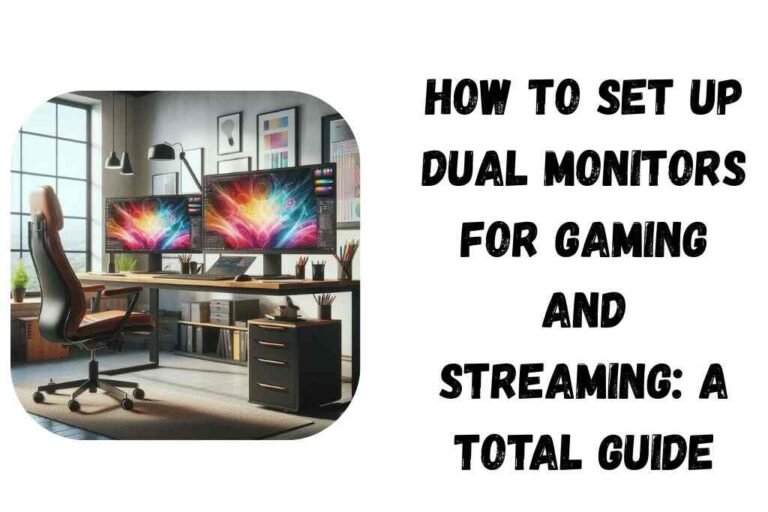How to Fix Low FPS Issues in AAA Games
Low FPS (frames per second) in AAA games can turn an immersive experience into a frustrating slideshow. Whether you’re battling lag in Cyberpunk 2077 or struggling with stutters in Elden Ring, this guide provides step-by-step solutions to boost performance, optimize settings, and reclaim smooth gameplay—no expensive upgrades required.

Understanding FPS: Why It Matters
FPS measures how many frames your PC renders per second. Higher FPS (60+) ensures smooth visuals, while low FPS (<30) causes choppiness, input lag, and gameplay disruptions. AAA games demand significant hardware resources, but even mid-tier systems can achieve playable FPS with the right tweaks.
1. Diagnose the Problem
Before diving into fixes, identify the root cause of low FPS:
A. Check Hardware Utilization
- Use MSI Afterburner or HWMonitor to monitor:
- GPU/CPU usage (consistently >90% indicates a bottleneck).
- Thermal throttling (temps >85°C for CPU/GPU).
- RAM/VRAM usage (close to max capacity slows performance).
B. Run Benchmarks
- Test your PC’s performance with 3DMark or UserBenchmark to compare against similar setups.
C. Identify Game-Specific Issues
- Search forums like Reddit or Steam Community for known bugs (e.g., Star Wars Jedi: Survivor’s stuttering issues).
2. Optimize In-Game Settings
AAA games often default to ultra settings, which can overwhelm mid-range hardware. Prioritize these tweaks:
A. Graphics Settings to Lower First
- Shadow Quality: High shadows tank FPS—set to Medium or Low.
- Anti-Aliasing (AA): Use FXAA or TAA instead of MSAA.
- Texture Filtering: Lower from 16x to 8x.
- Volumetric Fog/Clouds: Disable or reduce.
- Ray Tracing: Turn off unless you have an RTX 3070 or better.
Pro Tip: Use NVIDIA DLSS or AMD FSR for AI-powered upscaling without quality loss.
B. Resolution vs. Performance
- Drop resolution from 4K to 1440p or 1080p for a significant FPS boost.
C. Frame Rate Caps
- Cap FPS to your monitor’s refresh rate (e.g., 60Hz) to stabilize performance.
3. Update Drivers and Software
Outdated drivers are a common culprit.
A. GPU Drivers
- NVIDIA: Download the latest Game Ready Driver via GeForce Experience.
- AMD: Use AMD Adrenalin for updates.
- Intel Arc: Update via Intel Driver & Support Assistant.
B. Windows and DirectX
- Ensure Windows 10/11 is updated (Settings > Windows Update).
- Install the latest DirectX Runtime and Visual C++ Redistributables.
C. Game Patches
- Enable automatic updates on Steam, Epic, or other launchers.
4. Tweak Windows for Gaming
Background processes can hog resources.
A. Disable Bloatware
- Open Task Manager (Ctrl+Shift+Esc) and end unnecessary tasks (e.g., Discord overlay, OneDrive).
- Disable startup apps (Settings > Apps > Startup).
B. Enable Game Mode
- Turn on Game Mode (Windows Settings > Gaming) to prioritize resources for games.
C. Adjust Power Settings
- Select High Performance mode (Control Panel > Power Options).
D. Disable Fullscreen Optimizations
- Right-click the game’s .exe > Properties > Compatibility > Check “Disable fullscreen optimizations”.
5. Optimize Hardware Performance
A. Overclocking (Advanced Users)
- Use MSI Afterburner to safely overclock GPU core/memory clocks.
- Caution: Monitor temps and test stability with Heaven Benchmark.
B. Free Up VRAM and RAM
- Close Chrome, Discord, and other apps while gaming.
- Increase virtual memory (Settings > System > Advanced > Virtual Memory > Set to 1.5x RAM).
C. Cooling Solutions
- Clean dust from fans and vents.
- Repaste GPU/CPU thermal compound if temps exceed 80°C.
6. Modify Game Config Files
Some games allow manual tweaks for better performance.
A. Edit Engine.ini (Unreal Engine Games)
For games like Fortnite or Hellblade:
- Navigate to
Documents\My Games\[Game Name]\Config. - Open Engine.ini and add:
[SystemSettings]
r.ShadowQuality=0
r.TextureStreaming=False B. Adjust Nvidia Control Panel/AMD Adrenalin
- Force VSync Off, set Power Management to “Prefer Maximum Performance”.
7. Use Performance-Boosting Tools
A. Razer Cortex
- Frees up RAM and suspends background tasks automatically.
B. Intelligent Standby List Cleaner (ISLC)
- Clears standby memory to prevent stutters.
C. Process Lasso
- Assign high CPU priority to games.
8. Upgrade Hardware (Last Resort)
If all else fails, consider cost-effective upgrades:
- GPU: NVIDIA RTX 3060 Ti or AMD RX 6700 XT for 1080p/1440p.
- RAM: 16GB DDR4 (32GB for future-proofing).
- SSD: Install games on NVMe SSD for faster load times.
Game-Specific Fixes
- Elden Ring: Disable EAC (Easy Anti-Cheat) for offline play via mods.
- Hogwarts Legacy: Enable “Hardware-Accelerated GPU Scheduling” in Windows.
- Cyberpunk 2077: Use the “Slow HDD Mode” even on SSDs.
FAQ
Q: Why is my FPS suddenly low in a game that ran fine before?
A: Background updates, driver conflicts, or thermal throttling. Revert recent changes and monitor temps.
Q: Does RAM speed affect FPS?
A: Yes, but only marginally (5–10% gain with faster RAM in CPU-bound games).
Q: Should I use “Gaming” VPNs for better FPS?
A: No—VPNs increase latency and have no impact on FPS.
Conclusion
Fixing low FPS in AAA games requires a mix of software tweaks, hardware optimizations, and patience. Start with in-game settings and driver updates, then explore advanced tools and config edits. Remember, even high-end rigs benefit from optimization.
By following this guide, you’ll transform stutters into silky-smooth gameplay—and maybe even extend the life of your hardware. Now, go conquer Night City, the Lands Between, or whatever world awaits!






